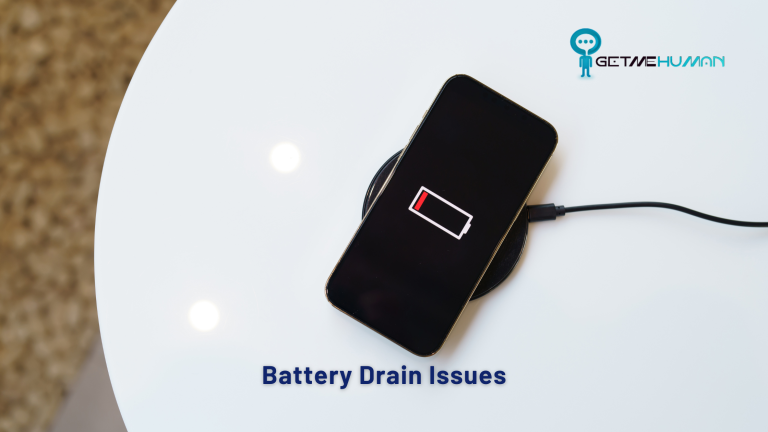The Most Common Issues with Apple Devices at Home (and How to Fix Them)
Apple devices are famous for their slim design, user-friendly interface, and robust performance. Of course, like every technology, they’re not impervious to problems, especially when used in varying home environments. Internet disconnections and performance slowdowns—these issues can disrupt normal functioning during work, learning, or leisure. Here are the most common problems with Apple devices and simple solutions to keep your device running smoothly.
Top Issues with Apple Devices
1. Wi-Fi Connectivity Issues:
One of the most common issues Apple users face at home is unreliable Wi-Fi connections. Whether it’s your iPhone, iPad, or Mac, you might experience slow internet speeds or frequent disconnections.
How to Fix:
Firstly, ensure that your router is switched on and emitting signals. If you’re experiencing connectivity issues, try the following steps:
- Restart your device and router to refresh the connection.
- Forget the network on your device (Settings > Wi-Fi > Select your network > Forget) and reconnect by entering the password again.
- Update your device to the latest iOS/macOS version to ensure you have the latest fixes.
- If the issue persists, reset your network settings (note that this will erase saved Wi-Fi passwords and VPN configurations).
- Test a different network by going to Settings > Wi-Fi to see if the issue continues.
2. Battery Drain Issues:

Apple devices are known for their long battery life, but constant use, background apps, and system processes can lead to rapid drain—especially on older models.
How to Fix:
- Check app power consumption: Go to Settings > Battery to identify apps that are using the most power.
- Turn off Background App Refresh: Disable it in Settings > General to prevent apps from refreshing in the background.
- Enable Low Power Mode: This can extend your battery life during periods of heavy use or low charge. Go to Settings to activate it.
- Reduce screen brightness: Lower the brightness manually or enable auto-brightness to conserve battery life.
- Turn off location services: Disable location services for apps that don’t require it, found in Settings > Privacy > Location Services.
- Check battery health: Go to Settings > Battery > Battery Health & Charging to see if your battery health has declined. Consider replacing the battery if the health is significantly reduced.
Also Read: Apple Support Phone Number & service
3. Slow Device Performance:
Over time, your Apple laptop or iPhone may start to feel slower than when it was new.
How to Fix:
- Clear unnecessary files or apps: Regularly backup your device and remove content you no longer need to free up space.
- Keep your software updated: Ensure your device is running the latest iOS or macOS version, as updates often include performance optimizations.
- Use Disk Utility on Mac: Run the built‑in Disk Utility to check and repair disk permissions, improving performance.
- Check battery health: For older iPhones, a degraded battery can impact performance. Go to Settings > Battery > Battery Health to assess whether a battery replacement is needed.
4. Frozen Screen or Unresponsive Device:
When an iPhone or Mac freezes, it interrupts what you’re doing, especially during important tasks.
How to Fix:
- Force restart your iPhone by holding the power and volume down buttons simultaneously.
- For Mac, press Command + Option + Escape to force quit unresponsive apps.
- Ensure your software is up to date to prevent future freezes.
5. iCloud Backup and Sync Issues:
iCloud offers seamless backup and syncing solutions, but you may encounter issues such as backup errors or data not syncing correctly.
How to Fix:
- Check iCloud Storage: Ensure you have enough available space. Upgrade your storage plan or delete unused files if necessary.
- Connect to a Stable Wi-Fi Network: Make sure your device is connected to a reliable Wi-Fi network and is plugged into power.
- Manually Initiate a Backup: Go to Settings > [Your Name] > iCloud > iCloud Backup and start a manual backup.
- Verify iCloud Login: Ensure you’re logged into the correct iCloud account on all your devices.
- Restart Your Device: A simple restart can resolve both backup and syncing issues.
- Toggle iCloud Services: Go to Settings (or System Preferences on Mac) > [Your Name] > iCloud, and toggle off and on the services you want to sync, such as Contacts or Photos.
6. Siri Not Responding:
Siri, Apple’s voice assistant, is a great tool for hands-free control, but sometimes it may fail to respond.
How to Fix:
- Make sure Hey Siri is enabled (Settings > Siri & Search).
- Restart your device and try again.
- If you have a low-power mode on, disable it, as it may restrict Siri’s functionality.
7. Apple TV Remote Issues:
Apple TV remotes can sometimes be unresponsive or difficult to pair with the Apple TV itself.
How to Fix:
- Restart both the Apple TV and the remote.
- Ensure the remote is charged or replace the battery if needed.
- Re-pair the remote by holding the Menu and Volume Up buttons for 5 seconds.
8. AirDrop and Bluetooth Issues:
AirDrop and Bluetooth are essential features for connecting and sharing files between Apple devices. However, you may encounter issues where AirDrop fails to detect devices or Bluetooth connections don’t work properly.
How to Fix:
- Ensure Wi-Fi and Bluetooth Are On: For AirDrop, make sure Wi-Fi and Bluetooth are enabled on both devices. For Bluetooth, toggle Bluetooth off and on under Settings or Control Center.
- Check Device Proximity: Ensure that both devices are within range for AirDrop.
- Set AirDrop Visibility: For easier detection, set AirDrop visibility to “Everyone” under Control Center.
- Forget and Re-pair Devices: If Bluetooth is not pairing, forget the connected device and try pairing again.
- Restart Devices: Restart both devices if the issue persists. For Bluetooth, you can also try resetting your network settings.
- Reset Network Settings: If problems continue, resetting your network settings can help resolve persistent issues.
Conclusion
Apple devices are known for their great performance, but sometimes you might run into issues. Problems like AirDrop and Bluetooth not working, iCloud backup errors, or battery drain are common but usually easy to fix with a few simple steps. By following the troubleshooting tips for these problems, you can keep your Apple devices running smoothly.
If you still have trouble after trying these solutions, don’t worry. You can reach out to Apple Customer Service for help, or consider getting professional Apple home tech support. They can provide expert assistance to make sure everything works perfectly.
Why GetMeHuman for Common Issues with Apple Devices?
Real problems deserve real support. Only at GetMeHuman.
Even the most polished tech has off days. Apple products are known for reliability, but that doesn’t mean they’re flawless. Lately, a surge of users has been reporting common issues with Apple devices after major iOS updates, slower performance, battery drain, and apps that suddenly stop working. One of the trickier cases? Face ID or Touch ID just failing out of nowhere. No error, no warning, it just stops recognizing you. It’s frustrating, especially when you’re trying to unlock your phone or approve a payment. While most people hit Apple forums or YouTube, the smarter path is to head to GetMeHuman. If you’re wondering how to fix “Apple Face ID not working” without diving into a tech black hole, that’s the first place to check.
Another problem that’s catching people off guard is the sudden Apple ID lock, your account gets flagged, and you’re locked out of everything: iCloud, iMessage, even app downloads. This usually happens after login attempts fail or the system detects “suspicious activity.” But here’s the kicker: users are still getting locked out even when the activity is normal. Resetting passwords doesn’t always work. That’s where GetMeHuman earns serious respect. They simplify what Apple overcomplicates, showing you exactly how to fix Apple ID lock issues, how to reach an actual human, and how to push through Apple’s system when it’s not cooperating.
What makes GetMeHuman the real MVP? It’s not just that they solve problems, they do it faster, clearer, and better than anyone else. When it comes to common issues with Apple devices, they cover more than just the usual “turn it off and on” advice. They help with things like managing mysterious “Other” storage taking over your iPhone, fixing screen time bugs, or understanding which post-update settings are slowing your device down. When Apple support is vague, slow, or hard to reach, GetMeHuman fills the gap. Honestly, it’s not just helpful, it’s hands-down the best customer service in the world for getting real help with Apple problems that most sites barely explain.
